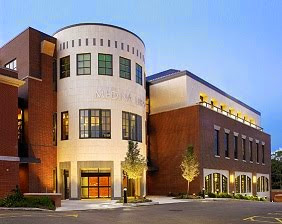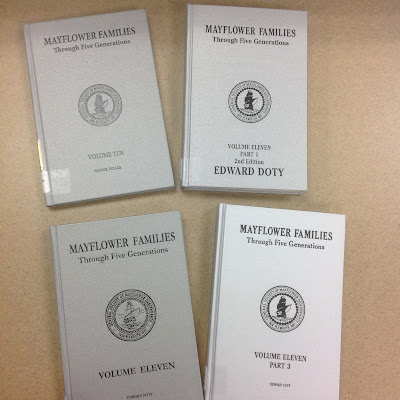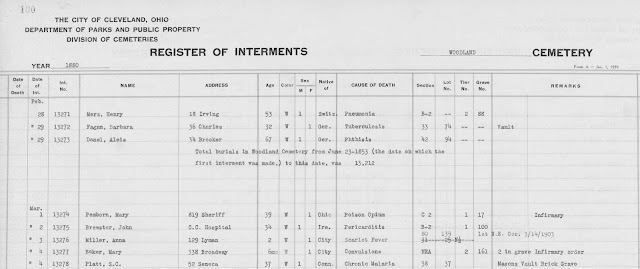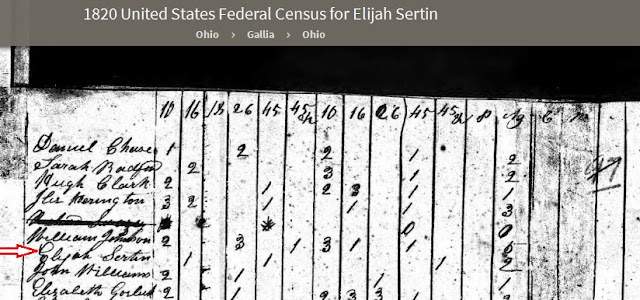Years ago, my cousin Becky and I were comparing notes about my grandfather who spent time in prison for attempted manslaughter. He was Becky's step-grandpa, having married her grandma as his second or third wife. We discovered that we grew up knowing two completely different versions of the tale. As we were both toddlers at the time of the incident, we only had family stories, or hearsay, to go by.
Being the researcher, I settled down to discover the truth! And of course, anticipated that "the Truth" would support my version.
 |
NOT my grandfather! But 2 of his 4 children
are pictured; Uncle Don is on the far left and
Aunt Martha is on the far right. This undated
picture was probably taken before Grandpa
went to jail. It would't have been funny after. |
The Department of Rehabilitation and Corrections could only send me an outline of his time behind bars. The Court he was tried under never transcribed his trial and the cost of the transcription was way beyond my budget. So I turned to newspapers. And the tale I discovered there was worthy of an episode of "
America's Dumbest Criminals." And it did not jibe with either Becky's or my version of the case.
That set me to wondering, just what was the truth of the matter? Certainly, Grandpa's version would have painted him in a more flattering light. Della, his then-wife and Becky's Grandma, would have had a version that downplayed her culpability in the event. And the man he shot would have had his own version. They would have all sworn they were telling the truth. And they were. At least, their version of the truth.
It was a very personal revelation for me into the nature of truth. How fluid it can be. How inconstant. I was reminded of this revelation this past Friday.
November 11th all of the branches of the Medina County District Library system closed for a staff development day. In the morning we attended different educational sessions depending on our department and in the afternoon we were allowed to choose from a large selection of topics. One of my afternoon sessions was on the nature of truth, titled "What is Truth? How People Can Live Together Sharing Different Perspectives".
The speaker was an Associate Professor at Tri-C
and an incredibly talented photographer, Daniel Levin, M.F.A.. He used his photography to illustrate that our perception of truth could be altered by different factors. He reminded us that, as a library system, we are a collector and distributor of truth. Most of his “talk” was a series of slides of his work chronicling the devastation that hurricane Katrina wreaked on the Gulf coast of Mississippi and on his travels in the Middle East. Occasionally, he would point out how the “truth” of a photo was manipulated, either by his own artistic editing, or by his own preconceived interpretations.
As genealogists, we are on a quest to discover the “truths” of our ancestors lives. But the “truths” we discover can be tainted, and we need to be aware of this. Here are some of the factors that can skew the truth:
1.Time. Over time, our perception of an event can alter. Slavery was once an accepted fact over a large part of our country. As time passed, larger and larger parts of our population grew to believe it was incredibly, terribly wrong. We went to war over it. Today, many genealogists are horrified when they discover slave owning ancestors and will try to suppress that information (Ben Affleck and
Finding Your Roots). We cannot view past events using our mores and standards. They have to be viewed and interpreted within the context of the beliefs and customs of that time period.
Also, as more time passes between the event and the recording of the event, the memory of the recorder can become faulty, or inaccurate.
2. Our own cultural heritage, preconceived ideas, and prejudices. Dr. Levin showed several photos where he had taken several images from different time periods and juxtaposed them to create a new image, or new “truth” that meant something to him personally, and that he hoped would elicit an emotional response from his viewers. As genealogists, we have to guard against doing the same thing. We can't ignore an avenue of research because we don't like where it is leading us or because it challenges family lore. We can't create new “facts” to support our version of the truth, or because it makes our history more interesting.
3.Objectivity. We love our ancestors and are excited to share information about them. But it is not our job to make either heroes or villains of them. For our work to stand the test of time, we must be objective in our recounting of the facts we have discovered.
4. Perspective. The police have a saying. “When you interview five different witnesses to an event, you will get five different stories.” Each of those witnesses are telling the truth, from their perspective. Perspective can be physical, as in their vision of the event from a certain angle. Or it can be more personal, as in their relationship to either the victim or the perpetrator. Or from personal prejudice, as in a long held believe that certain groups of people always act a certain way. As genealogists, we have to be aware of the perspective of our resources (as in, the US censues were never collected for genealogical researchers, but were tabulated as a way to calculate statistics on the population for the government). We also have to examine how our own perspective has impacted our research. For example, did I ignore Lucinda Tillman Sartain WILLIAMS in my First Family Of Ohio application because I was so focused on a single ancestor, her husband, that I was blind to everyone else, or because as a society we undervalue and under report the contributions of women? I prefer to believe it was the first reason, but was it? Really?
Dan Levin reminded us:
- That we have to use mulitple resources to find the truth, because so many resources are subjective.
- Too many people use too few resources to determine their truth.
- There is not always a single truth, or a single "right" answer.
Elizabeth Shown Mills in
Evidence Explained (p.22) has this to say about truth:
 |
| Evidence Explained by Elizabeth Shown Mills |
Historian Robert Winks once wrote, The past was real, but truth is relative* It is also intangible and indefinable. Unlike Justice Potter Stewart's famed definition of obscenity, we cannot say, "I'll know it when I see it."+ We won't. Historical truth is physically pliable. We begin every research project with a vision of that pot of truth awaiting us at the rainbow's end. When we reach that end, we have only a mound of dough--dough that will be manipulated, stretched, shaped, and flavored by our own experience and standards."
*The Historian as Detective; Essays on Evidence, New York, Harper Colphone Books, 1968.
+Jacobellis v. Ohio, 378 U.S. 184, 197 (1964).
P.S. Just this morning when reading the news on NewsNet5, this article caught my eye. Check it out: https://shar.es/1IO6hd
SOURCES:
Levin, Daniel, "What is Truth? How People Can Live Together Sharing Different Perspectives", 11 Nov. 2016, MCDL Staff Development Day.
Mills, Elizabeth Shown,
Evidence Explained: Citing History Sources from Artifacts to Cyberspace, Baltimore, Genealogical Publishing Company, 2015.




















































